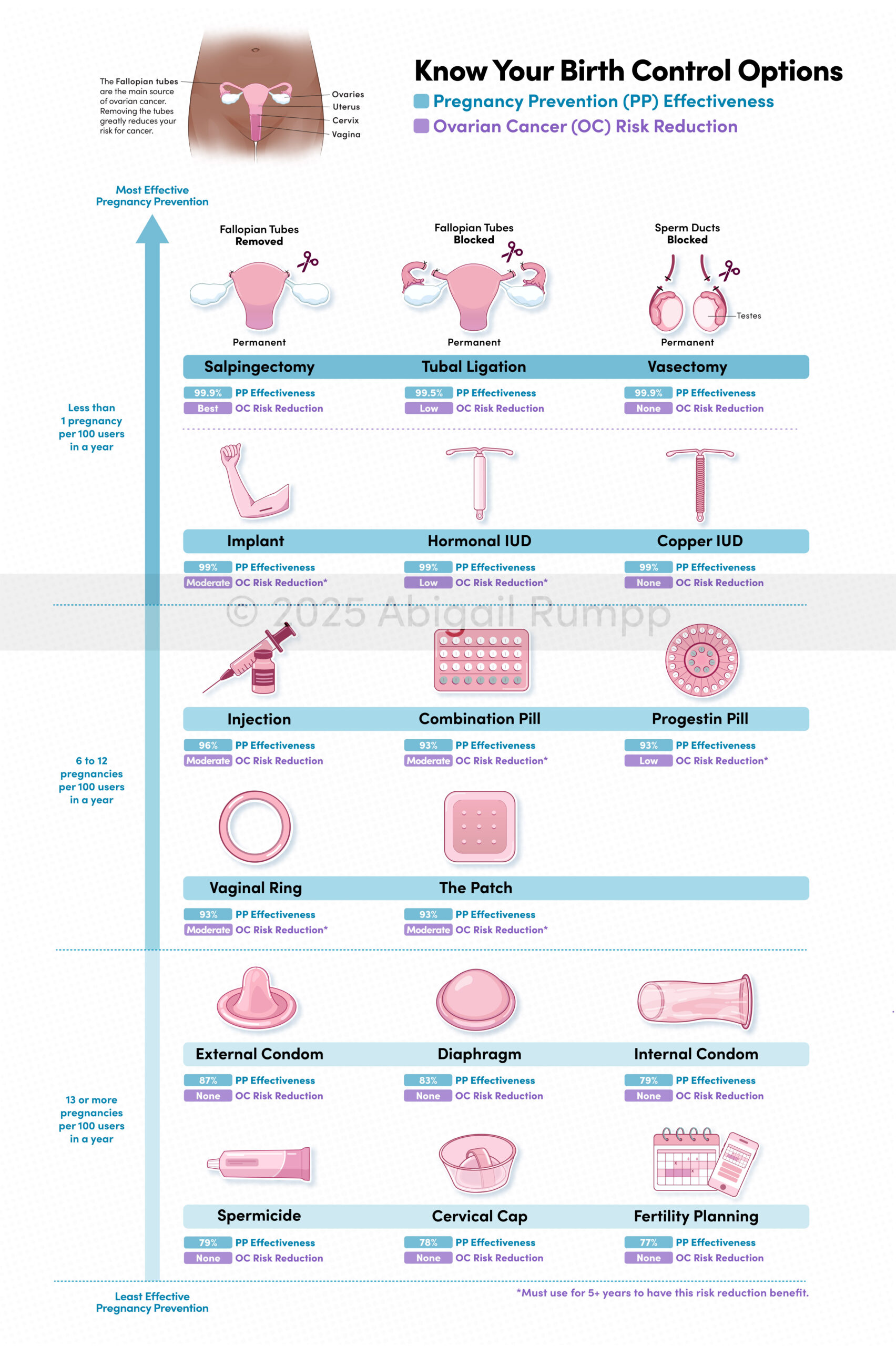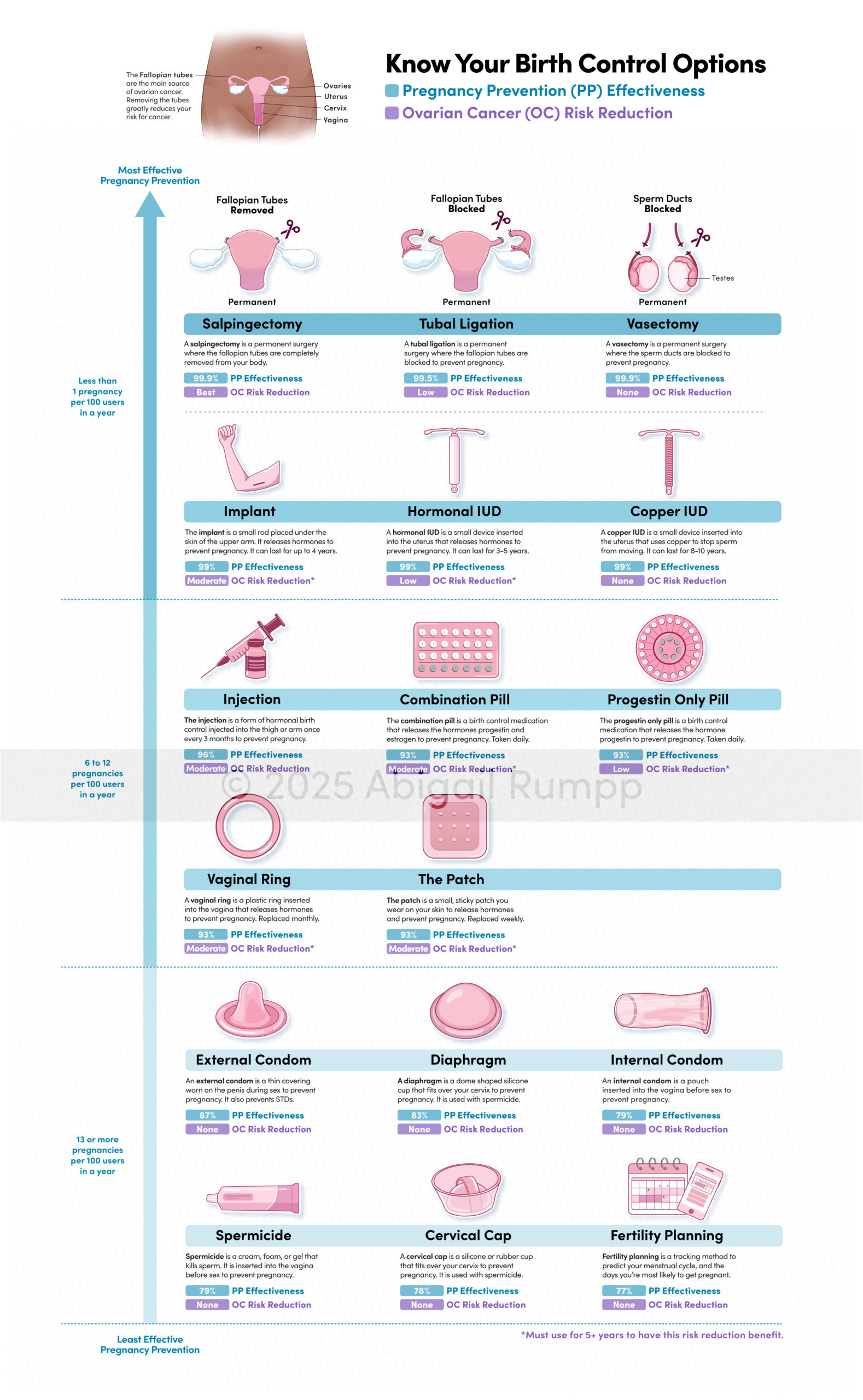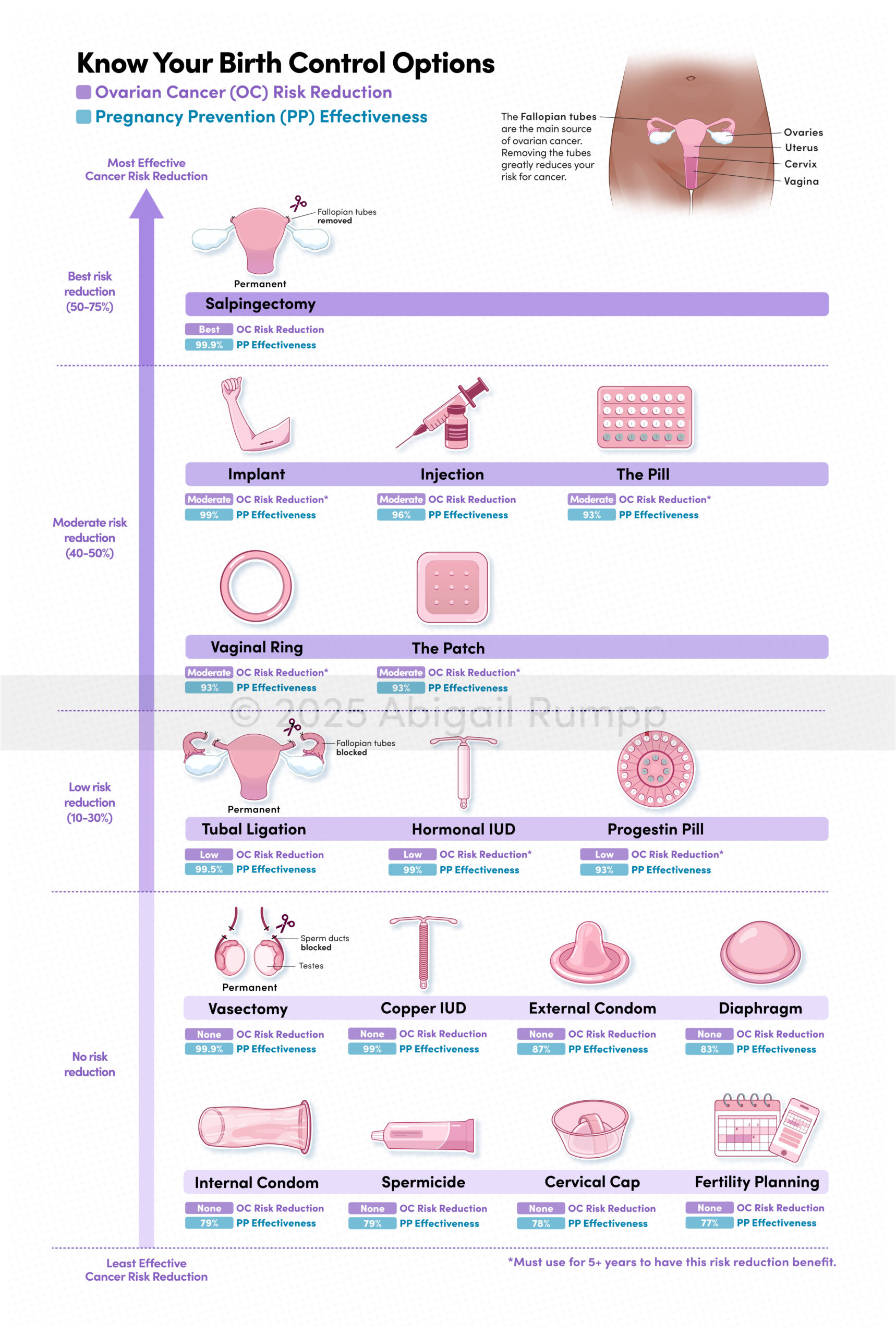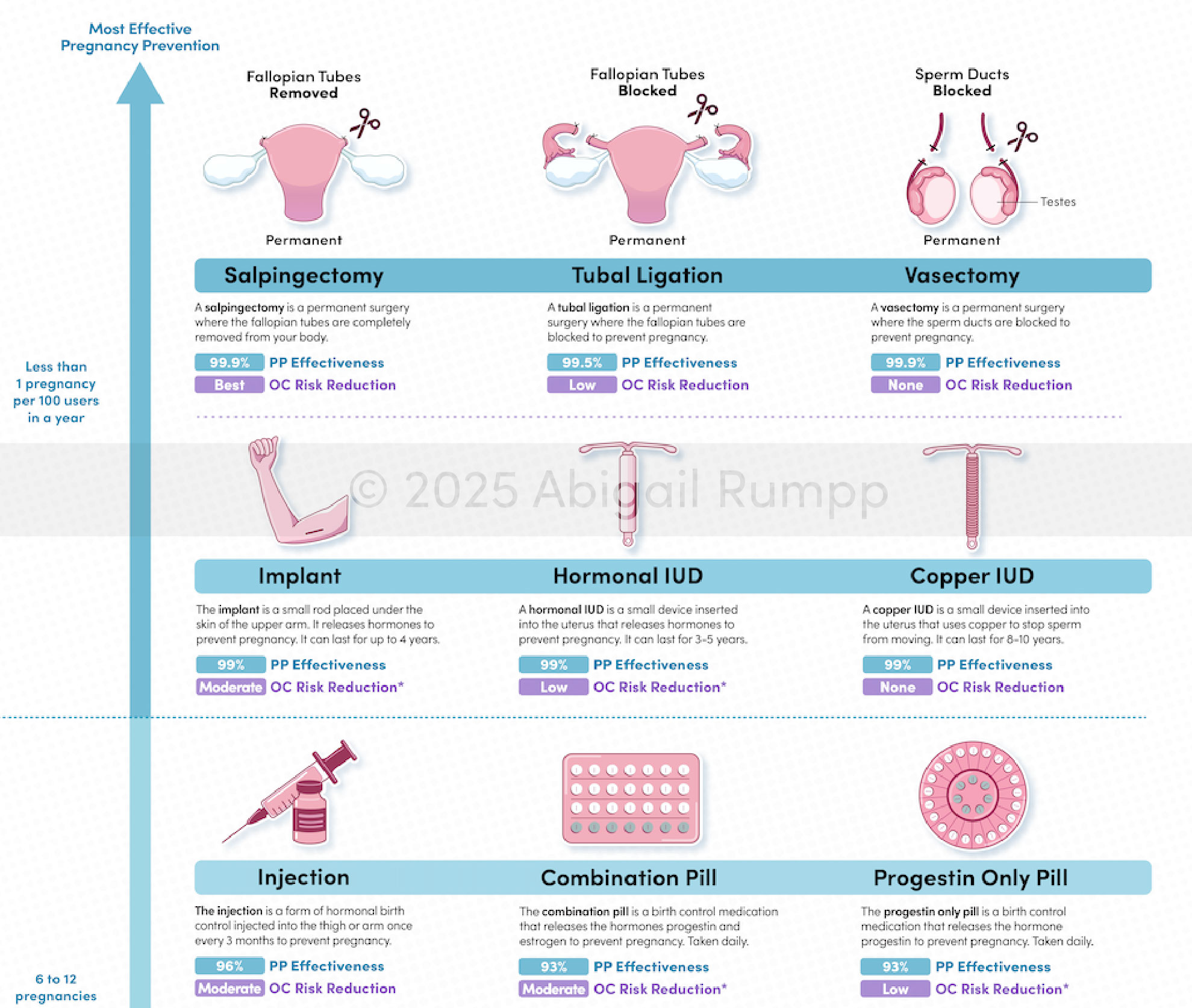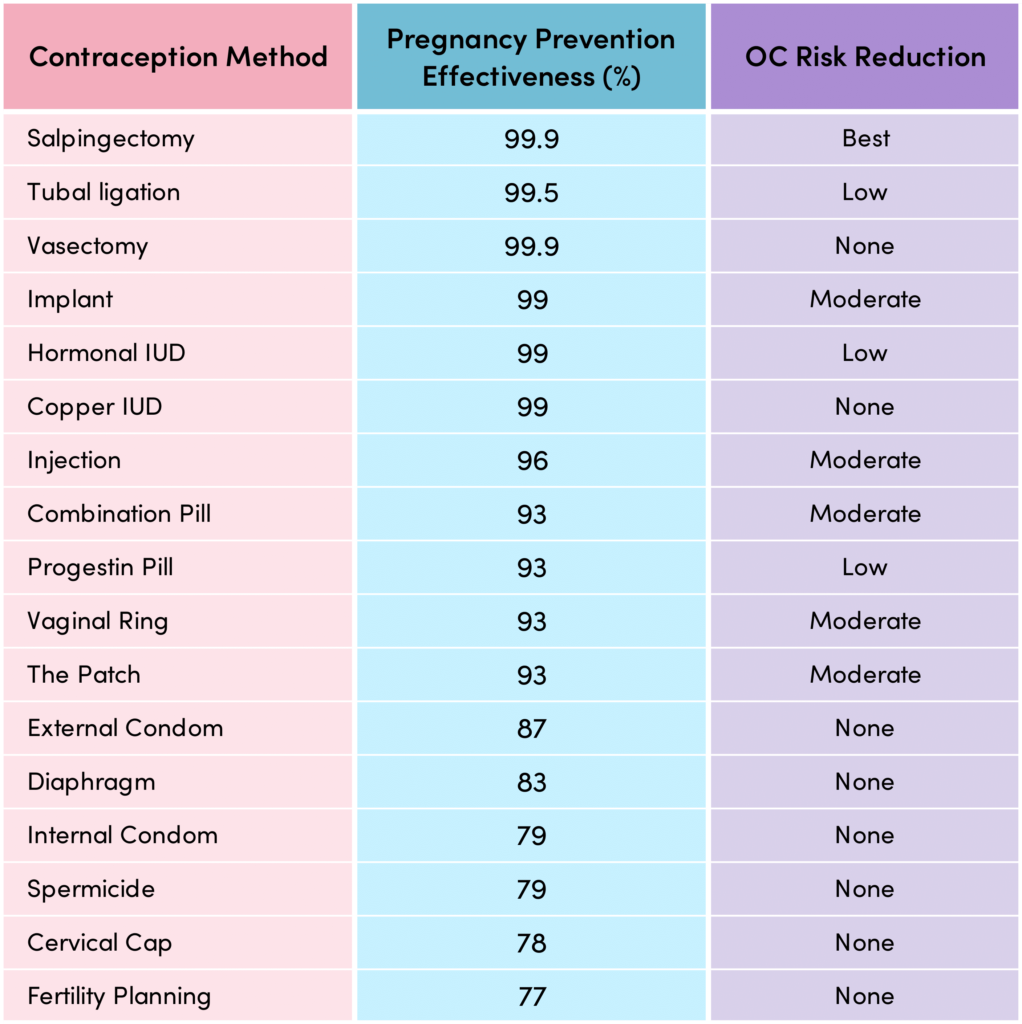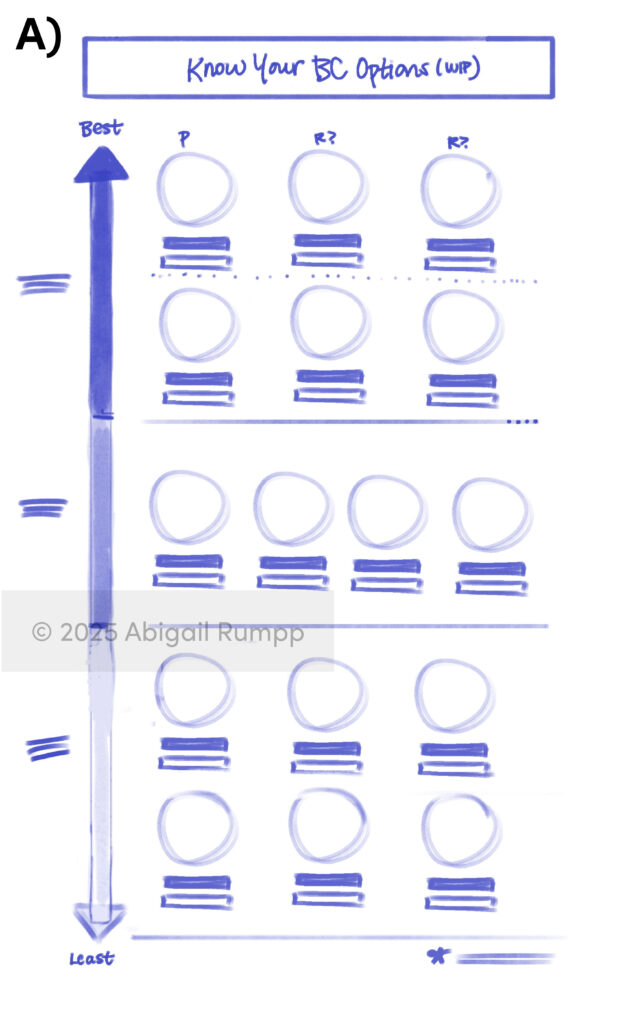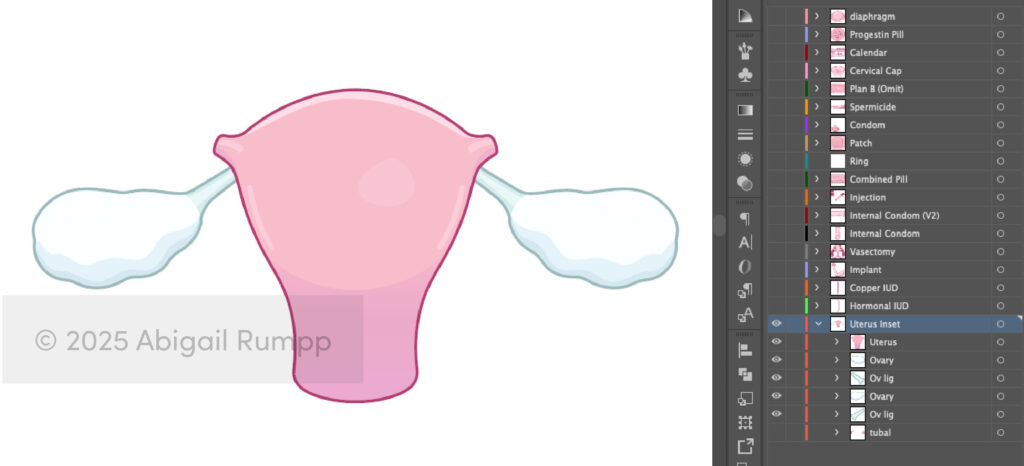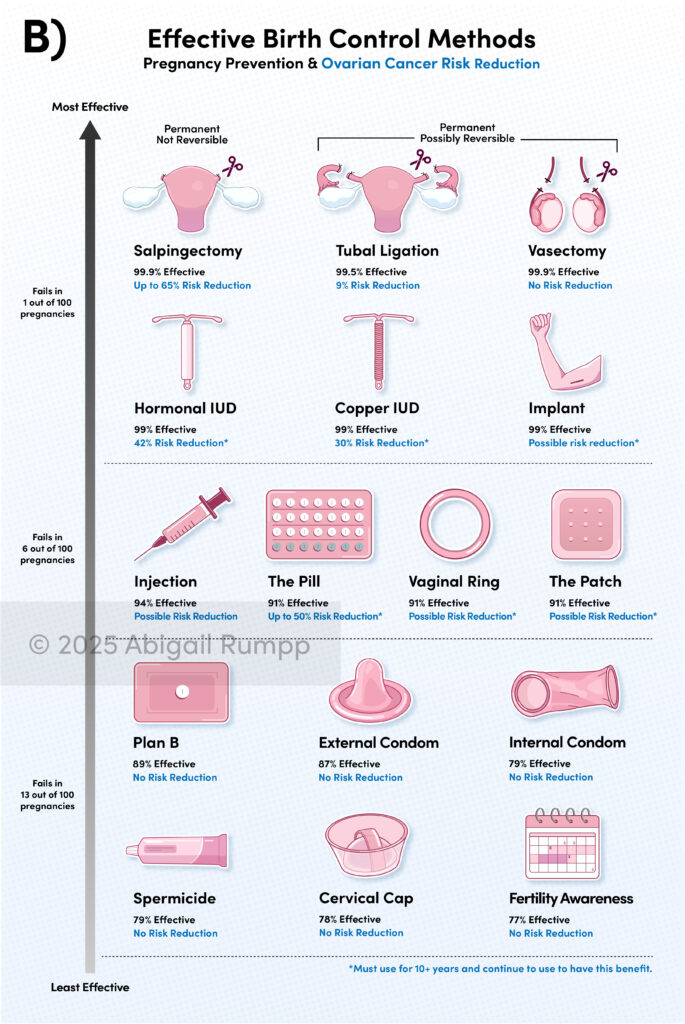Birth Control Posters
About the posters
These posters are part of a larger multimedia educational initiative developed for my thesis, which addresses the lack of accessible, patient-facing materials at the intersection of permanent birth control and ovarian cancer. To date, there are no existing birth control posters that differentiate between salpingectomy and tubal ligation, or that present salpingectomy alongside other contraceptive options as a potential method of ovarian cancer risk reduction. These posters are the first of their kind to fill that gap. They were created to help introduce these conversations earlier in a patient’s reproductive healthcare journey—rather than only presenting these options during pregnancy, at the time of surgery, or later in life.
By opening up the conversation sooner, they aim to support informed decision-making and normalize discussions about the full range of contraceptive options in relation to cancer prevention. Posters are available in English, Spanish, Korean, Simplified Chinese, Arabic, and Russian. Read below to learn more about the in-depth design decisions for each poster.
Adobe Illustrator
2025
The Case for Two Blues
Two versions of a pregnancy prevention–focused poster (blue) were created: one offers a streamlined comparison of methods by effectiveness, while the other includes expanded information on how each method works and how long it lasts. The more detailed version was developed in response to feedback from younger audiences who expressed a preference for additional context when considering their options. Including both versions allows the material to meet patients where they are—whether they’re looking for a quick overview or a deeper understanding of available methods.
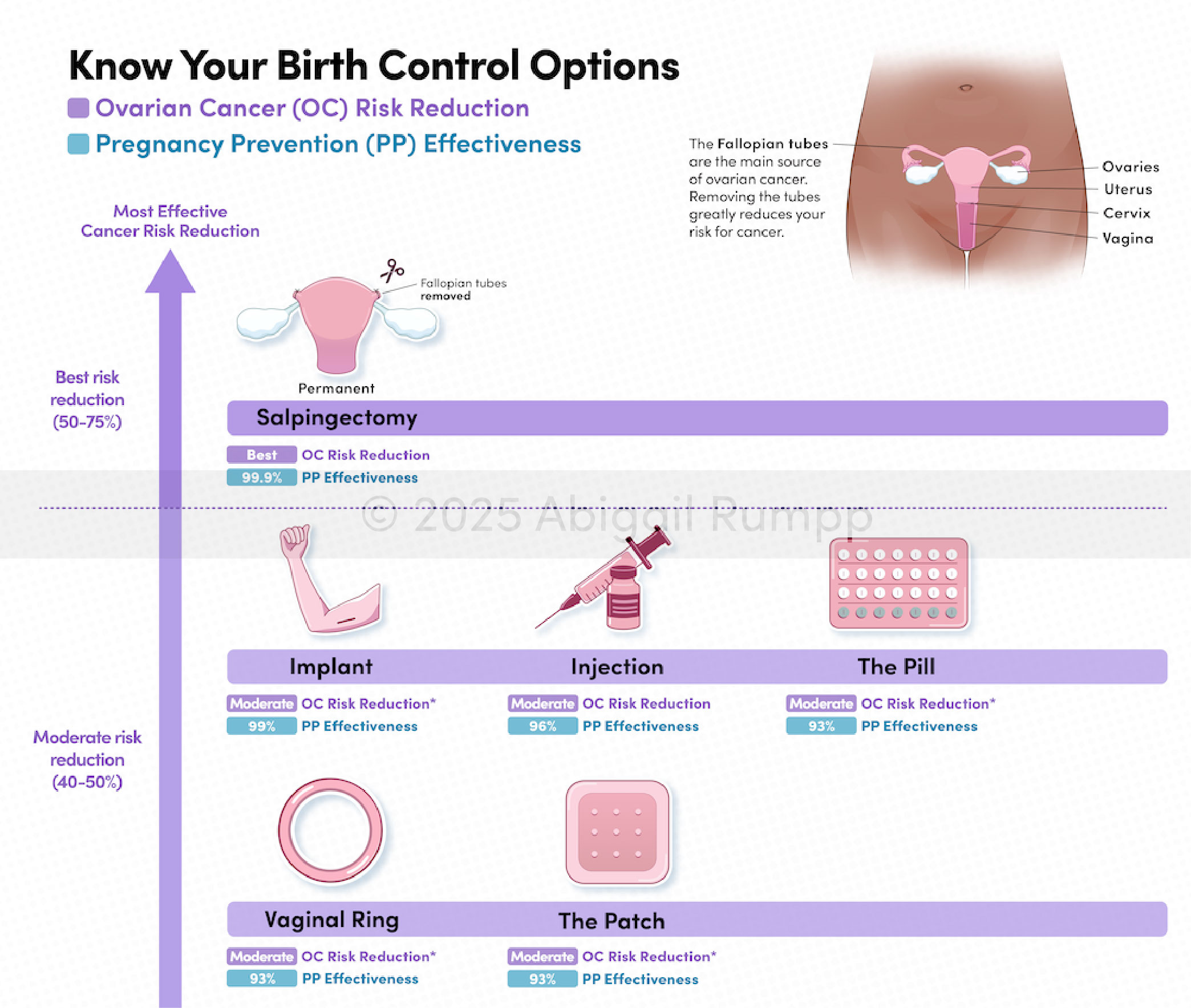
Simple is Best
The third poster (purple) focuses on ovarian cancer risk reduction and presents both permanent and non-permanent birth control options. It is organized by how effective each method is at reducing ovarian cancer risk, providing a clear comparison to support informed decision-making. This version was intentionally simplified based on feedback from older audiences—such as individuals in menopause or those finished with childbearing—who preferred minimal, direct information when navigating conversations about cancer risk.

